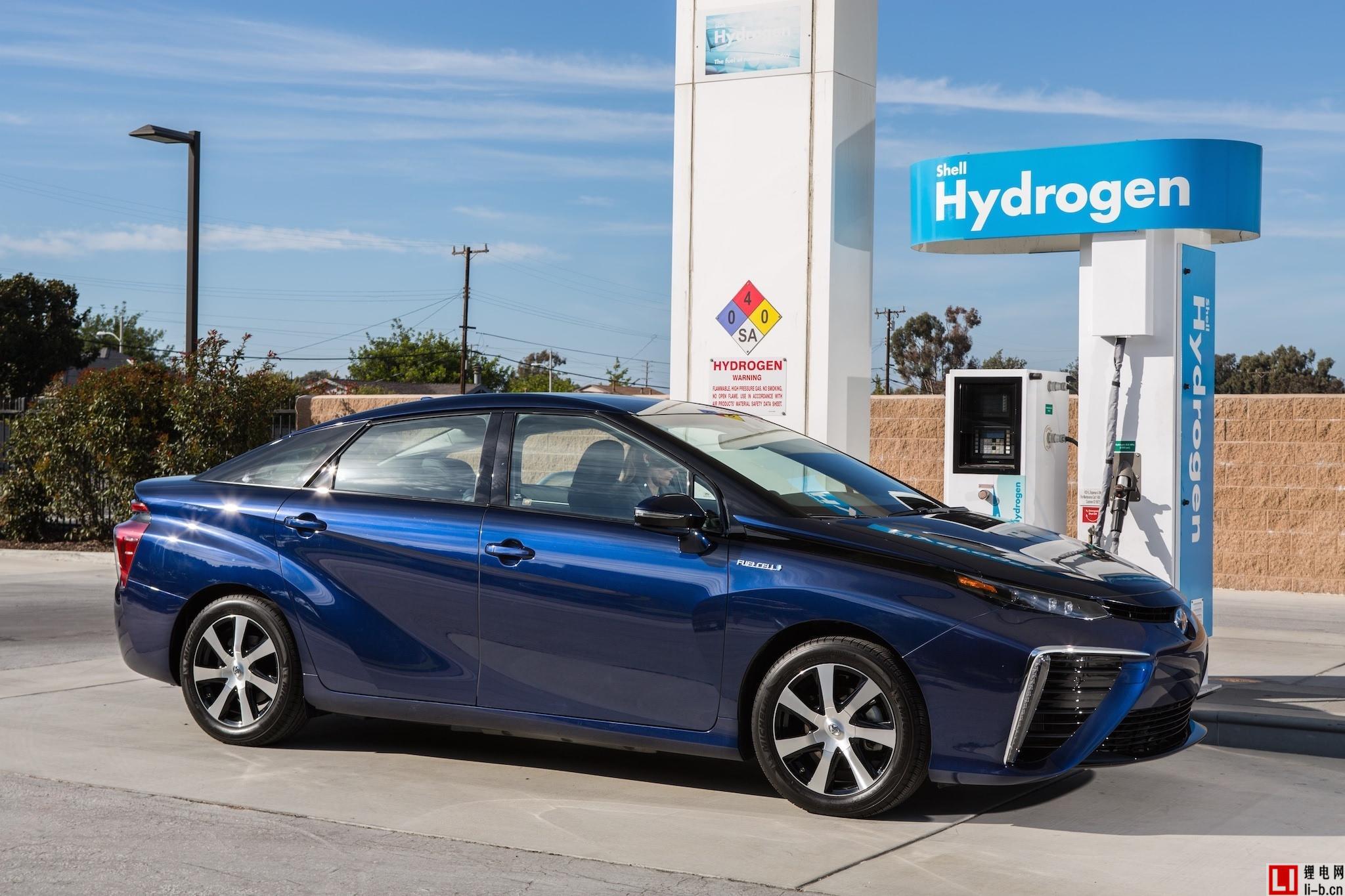Lithium Grid News: Some time ago, Premier Li Keqiang visited the Toyota Motors Hokkaido factory in Japan to inspect the hydrogen fuel cell vehicle." Wang Cheng stressed.
Lithium Grid News: Some time ago, Premier Li Keqiang visited the Toyota Motors Hokkaido factory in Japan to inspect the hydrogen fuel cell vehicle. This move was interpreted as a positive signal to the hydrogen fuel cell vehicle industry.
A somewhat embarrassing reality is that foreign fuel cell vehicles have achieved mass production, but China's vehicle fuel cells are still in the technical verification stage. Wang Haijiang, professor of the Department of Mechanical and Energy Engineering at Southern University of Science and Technology, pointed out that the current status of China's automotive fuel cells is almost no component manufacturers, car-free power reactor production companies, and only a very small number of commercial fuel cell vehicles.

Fuel cell is "a team"
Generally speaking, the voltage of a single-cell fuel cell is low and the current is too large. In practical applications, a multi-section fuel cell is required to form a stack in series to increase the output voltage.
Hydrogen fuel cells are powered by hydrogen and oxygen, both of which begin their "fantasy" journey in fuel cells: hydrogen oxidizes under anode catalysis to generate protons and electrons; electrons work through external circuits to reach the cathode; and protons The proton exchange membrane is transported from the inside of the battery to the cathode, and protons and electrons are combined at the cathode to react with oxygen to form water.
It seems to be just a junior middle school chemistry knowledge. But in fact, the operation of the fuel cell is a systematic project.
Unlike ordinary batteries, fuel cells are more like generators – “drinking” fuel and oxidizers into electricity. So, in addition to the stack, the fuel cell also has a fuel supply subsystem, an oxidant supply subsystem, a hydrothermal management subsystem, and a thermal management and control system... In short, people are team operations.
"The fuel cell vehicle is a kind of new energy vehicle , and it is one of the future development directions." Shao Zhigang, director of the Fuel Cell Research Department of the Dalian Institute of Chemical Technology, Chinese Academy of Sciences, told the Science and Technology Daily reporter that at the end of 2014, Toyota of Japan announced the realization of a fuel cell vehicle. Commercialization; at home, everything is still in its infancy.
Key materials are still lacking in mass production lines
Vehicle fuel cells are generally proton exchange membrane fuel cells.
It has two key components, one called a membrane electrode assembly and one called a bipolar plate. The former is actually composed of "three brothers": proton exchange membrane, catalytic layer and gas diffusion layer.
The main function of the proton exchange membrane is to transport protons, separate reactive gases and electronic insulation. It is responsible for “putting the door”, putting the protons over and blocking the electrons; the catalyst layer is mainly loaded with a catalyst, the catalyst can promote the redox process of hydrogen and oxygen on the electrode and generate electricity; the gas diffusion layer is composed of the base layer and the micro The pore layer composition, which is required to have high conductivity, thermal conductivity, and hydrophobicity.
These key materials determine the life and performance of the fuel cell.
"It is difficult for a clever woman to be without rice. Our key materials have long relied on foreign countries. Once the foreign sales are banned, China's fuel cell industry will have no material foundation support," said Wang Cheng, director of the hydrogen fuel cell laboratory at Tsinghua University.
In fact, these materials are not completely absent in China, and some laboratory results have even reached international standards. However, without a mass production line, the fuel cell industry chain is still obstructed. Especially in the gas diffusion layer mass production technology, China is still blank. "This is because the graphitization process of the gas diffusion layer needs to be prepared at a high temperature of 2000 ° C or higher, but the high-temperature furnace technology of the key equipment is still in the hands of foreign countries." Wang Cheng explained.
To achieve mass production of materials, it is necessary to solve the problem of consistency and cost control. It is not the same as the difficulty of laboratory preparation. Taking the catalyst as an example, Wang Cheng told the Science and Technology Daily that the current commercial fuel cell catalyst is still a platinum-based catalyst. The laboratory preparation level is generally milligrams, and the mass production technology requires a kilogram level. Mass production should break through three key technologies: first, uniform reaction conditions to ensure batch stability; second, platinum particle nanometer size control to ensure catalytic activity specific surface area; third, improve carbon carrier stability to achieve vehicle operating conditions The service life under.
Industrialization of laboratory results is a key technology that requires business involvement. "For a long time, the research and development of fuel cells in China has been carried out mainly by universities and research institutes. Enterprises have a wait-and-see attitude, participated less, and joined late." Shao Zhigang's Dalian Institute of Chemical Industry began research on fuel cells for vehicles in 1994. But the break between basic research and application makes the industrialization of key materials a hurdle.
To be commercialized, you have to have strong chains and complementary chains.
Wang Haijiang returned to China this time, just want to bring years of experience in the field of fuel cells, and the team built a fuel cell industry chain in Shenzhen.
First, Nanke Fuel Cell Co., Ltd. is mainly engaged in the production of key parts of the reactor, stack integration and testing. However, if the raw materials of the stack are imported from abroad, the cost is too high. As a result, the team set up a company to focus on the localization of three key materials: gas diffusion layer, proton exchange membrane and catalyst. "At that time, the cost of fuel cells can be reduced by a third." Wang Haijiang said.
At present, the number of power reactors and industrial chain enterprises in China is gradually increasing. It is expected that the domestic power reactor capacity will exceed 400,000 kW in 2018. "Pure electric vehicles have made great progress in recent years, creating very good conditions for the application of fuel cells." Wang Cheng said, "At this time, we need to focus on fuel cell core innovation."
To break the long-term technological monopoly of developed countries, it is necessary to increase investment in the industrialization of fuel cell core materials. Experts interviewed pointed out that the fuel cell industry chain is “very long” and involves end products such as hydrogen energy systems, fuel cell power generation systems and automobiles. "The domestic parts, hydrogen infrastructure and standard specifications are still not perfect. We need strong chain and supplementary chain to drive the growth of new materials, new energy and high-end equipment manufacturing to promote the commercialization of fuel cells." Wang Cheng stressed.


 在线地图
在线地图 收藏本站
收藏本站

